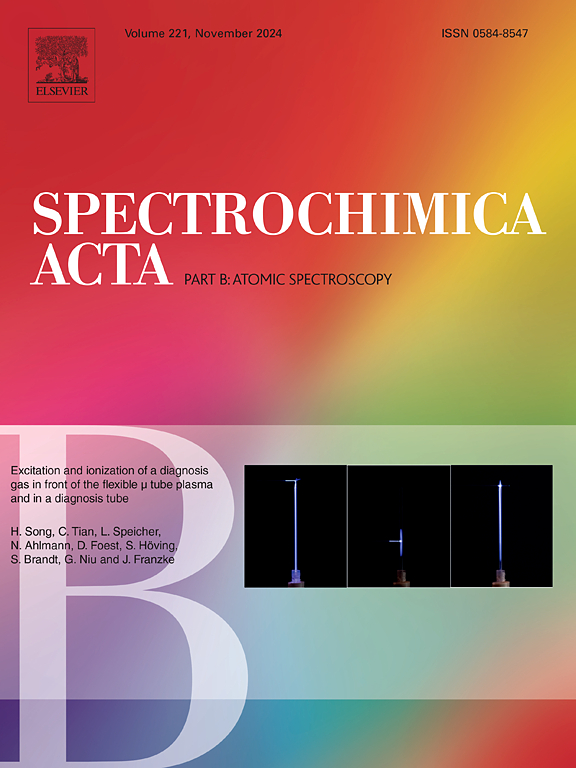Ensemble-learning for pressure prediction in vacuum circuit breaker using feature fusion of laser-induced plasma spectra and images
IF 3.2
2区 化学
Q1 SPECTROSCOPY
引用次数: 0
Abstract
The detection of vacuum level using laser-induced plasma shows a great potential for safe and reliable online monitoring of vacuum level on vacuum interrupter. However, traditional methods often rely on a single type of plasma signal (spectra or image), which leads to relatively low accuracy. To tackle it, this paper employs ensemble learning to fuse plasma spectra and images to construct a regression model using Gradient Boosting Regression (GBR), Multilayer Perceptron Regression (MLP), Support Vector Regression with Radial Basis Function (SVR-RBF), and Linear Regression (LR). The model consists of Image prediction module, Spectra prediction module, and Ensemble learning module. In the first two modules, the base models predict pressure based on images and spectra, respectively. The predictions are then stacked in Ensemble learning module and fed into LR for final pressure prediction. The results indicate that the base models within the Image prediction module and Spectra prediction modules can predict pressure; however, their prediction errors are significantly greater than those of Ensemble learning module. The prediction errors and evaluation parameters reveal that ensemble learning, in combination with feature fusion, effectively reduce the prediction errors, and significantly enhance predictive performance of model. More importantly, the Limit of Quantification (LOQ) of this method reaches 10−5–10−4 Pa, meeting the requirements of the electric power industry standards. A beneficial exploration has been conducted on the application of vacuum level detection based on laser-induced plasma.

求助全文
约1分钟内获得全文
求助全文
来源期刊
CiteScore
6.10
自引率
12.10%
发文量
173
审稿时长
81 days
期刊介绍:
Spectrochimica Acta Part B: Atomic Spectroscopy, is intended for the rapid publication of both original work and reviews in the following fields:
Atomic Emission (AES), Atomic Absorption (AAS) and Atomic Fluorescence (AFS) spectroscopy;
Mass Spectrometry (MS) for inorganic analysis covering Spark Source (SS-MS), Inductively Coupled Plasma (ICP-MS), Glow Discharge (GD-MS), and Secondary Ion Mass Spectrometry (SIMS).
Laser induced atomic spectroscopy for inorganic analysis, including non-linear optical laser spectroscopy, covering Laser Enhanced Ionization (LEI), Laser Induced Fluorescence (LIF), Resonance Ionization Spectroscopy (RIS) and Resonance Ionization Mass Spectrometry (RIMS); Laser Induced Breakdown Spectroscopy (LIBS); Cavity Ringdown Spectroscopy (CRDS), Laser Ablation Inductively Coupled Plasma Atomic Emission Spectroscopy (LA-ICP-AES) and Laser Ablation Inductively Coupled Plasma Mass Spectrometry (LA-ICP-MS).
X-ray spectrometry, X-ray Optics and Microanalysis, including X-ray fluorescence spectrometry (XRF) and related techniques, in particular Total-reflection X-ray Fluorescence Spectrometry (TXRF), and Synchrotron Radiation-excited Total reflection XRF (SR-TXRF).
Manuscripts dealing with (i) fundamentals, (ii) methodology development, (iii)instrumentation, and (iv) applications, can be submitted for publication.

 求助内容:
求助内容: 应助结果提醒方式:
应助结果提醒方式:


